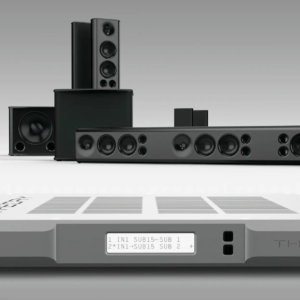The recent chip shortage has affected many sectors of commerce, and those effects have been passed down to consumers.
There are a lot of reasons for this supply chain shortage, many of them stemming back to the lockdowns at the beginning of the COVID-19 pandemic. Consumers have felt the pinch as anything requiring semiconductors is either nearly impossible to get or prohibitively expensive.
In July of 2022, Congress passed the CHIPS Act to help address this growing issue. The bill includes $52 billion for producing semiconductors within the United States. The CHIPS Act has received pushback from both sides of the political aisle but was ultimately able to pass with bipartisan support in both the House and Senate.
While the automotive industry may be the industry most people associate with chip shortage problems, multiple technology sectors can benefit from the passage of the CHIPS Act, including the AV supply chain.
1. The CHIPS Act Brings Production to the United States
Currently, most of the semiconductor chips used in the United States are manufactured in other countries. The United States only manufactures 12% of the world’s supply of semiconductors. The majority of semiconductor chips are manufactured in Asia, primarily by China, Taiwan, South Korea, and Japan.
While the increased demand for chip-based technology in the early stages of lockdown certainly has contributed to this shortage, the supply chain is also incredibly fragile. In recent years, the global supply chain has been affected by:
- COVID-19 fluctuations around the world
- Tense US-China relations
- A potential China-Taiwan conflict
- Russia’s invasion of Ukraine
- Natural disasters, such as a March 2022 earthquake in Fukushima that destroyed a semiconductor factory
By bringing some of that semiconductor production to the United States, it would mean the supply chain is more resilient to global issues. A COVID surge in Malaysia won’t delay production. Nor will international conflicts or severe weather events in other countries. Expanding semiconductor factories also allows the United States to take the pressure off of other countries to manufacture our chips.
2. Companies Gain More Oversight
Right now, even US-based companies manufacture many of their semiconductors overseas. For example, Micron Technologies is based out of Boise, Idaho, and while they have two United States plants and are looking to expand, the majority of their semiconductor manufacturing is done overseas.
By moving more production to the United States, companies like Micron have more immediate access to their production side of operations. While there’s always a chance that too much oversight can clog up production, the hope is that by providing companies easier access to their manufacturing operations, the design process will be smoother and failures can be caught more quickly. This can speed up the process of getting chips made while reducing waste caused by errors in production or design.
3. Companies Can Easily Adjust Factory Production
While the world is currently in a chip shortage, it won’t always be. Once things are at equilibrium again, there may be periods of time when chips aren’t as in demand. By having their factories based in the United States, companies can utilize these factories for other needs during downcycles. Those production lines can be used for whatever is in the middle of an upcycle to better meet the demand of an ever-growing technological world.
It’s not just adjusting to meet market demand. This would allow factories to pivot manufacturing easily in emergency situations, like what we saw at the beginning of the COVID-19 pandemic.
When the pandemic started raging across the United States and lockdowns happened in March of 2020, many companies big and small stepped in to help by manufacturing much-needed equipment.
For example:
- Dyson temporarily halted vacuum production to design and produce ventilators
- Many distilleries and cosmetics companies switched gears to manufacture hand sanitizer
- Michigan-based company Steelcase took a break from making furniture to making health care equipment like masks and face shields
- Japanese electronics manufacturer Sharp Corporation paused typical production of electronic displays to make surgical masks
- Ford assembled more than 100,000 plastic face shields per week and used their 3-D printing technology to make medical equipment parts
- 3M and Ford together worked to make a powered air-purifying respirator
- GM manufactured ventilators
While these changes could certainly still be implemented if the factory was in another country, by building factories in the same country as the business headquarters, these changes can be implemented much faster without concerns about global shipping delays.
4. Location Diversity Prevents Mass Loss
The majority of Asian semiconductor factories are located along a region of the Pacific Ocean called the Ring of Fire. Cities and countries in this area tend to experience a high number of volcanoes, earthquakes, and tsunamis, due to high levels of tectonic plate activity nearby.
We’ve already seen the devastation that large natural disasters can cause to this area. A 2011 earthquake and subsequent tsunami caused a nuclear accident in Fukushima, Japan, resulting in high radioactivity in the area and 100,000 people being evacuated. As previously mentioned, a more recent earthquake in the same area caused power outages and destruction to buildings that led to the temporary closing of at least one semiconductor factory.
From earthquakes to storms to unexpected political unrest, it can be difficult to predict what sort of environmental challenges a region may face. With all semiconductor factories located in a small geographical area, a large earthquake in the western Pacific could disrupt supply lines around the entire world. By transferring and adding semiconductor production to the United States, semiconductor manufacturing can continue even if one part of the world is dealing with a natural disaster.
Companies have already started planning semiconductor factories all over the United States. Because the US is such a large country with a variety of climates, a natural disaster in one area of the country won’t halt production in other areas—a California earthquake, for example, won’t stop production in Ohio, and a Texas tornado won’t stop production in Virginia. When it comes to manufacturing, the more geographical diversity, the better.
What’s Next for the CHIPS Act?
Biden is set to sign the CHIPS Act into law on August 9, 2022.
The $52.7 billion dollars in funding will go out to chipmakers over the course of five years, with the hopes that it will help alleviate the current chip shortage and prevent future shortages from occurring.
There won’t be an immediate increase in semiconductor chips once this bill is signed, but it’s a step in the right direction for avoiding supply chain interruptions, including another audiovisual chip shortage, in the future.
Tim Albright is the founder of AVNation and is the driving force behind the AVNation network. He carries the InfoComm CTS, a B.S. from Greenville College and is pursuing an M.S. in Mass Communications from Southern Illinois University at Edwardsville. When not steering the AVNation ship, Tim has spent his career designing systems for churches both large and small, Fortune 500 companies, and education facilities.









